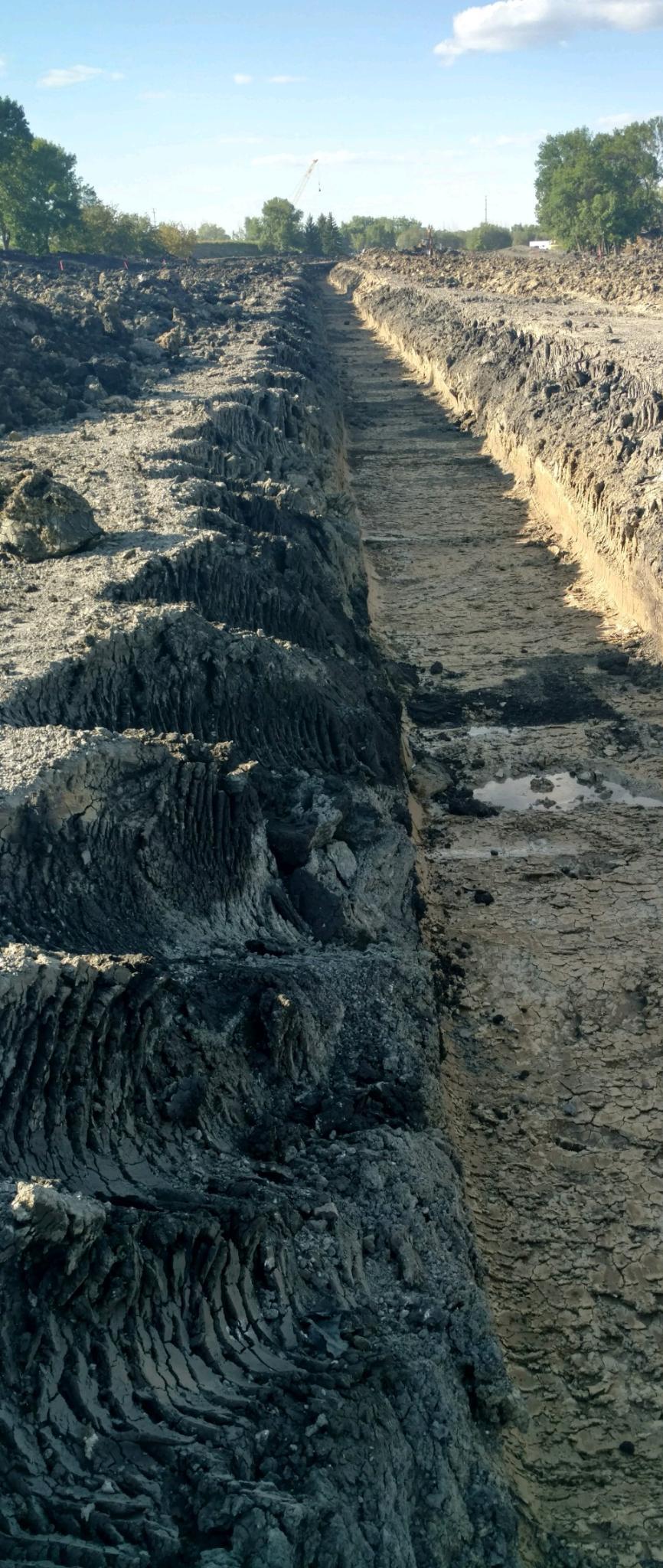[ JUMP TO UPDATE: 8-30-2017 Response from Jason Benson, Cass County Engineer ]
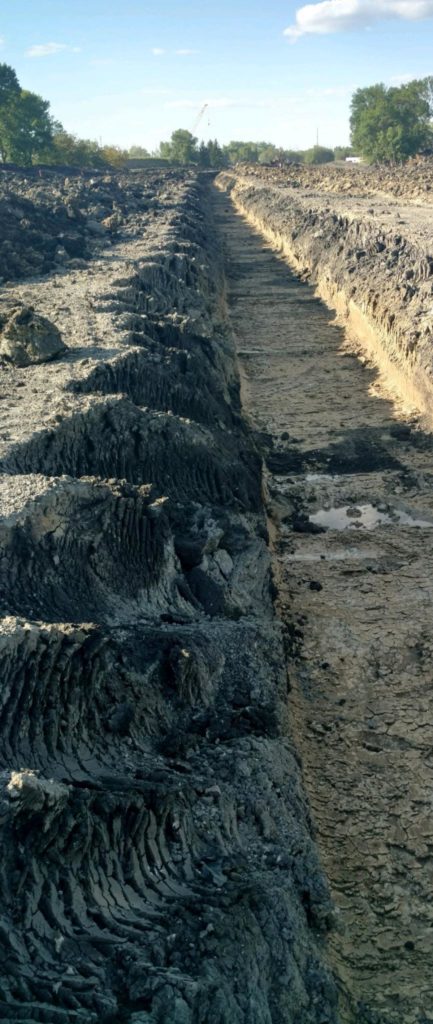
An inspection trench for a future permanent ring dike at Oxbow, ND is raising questions for some residents.
The images and concerns were sent to FMDam.org for four basic reasons:
1) confidence the matter would not get buried
2) lack of faith in Oxbow, ND leaders
3) fear of reprisal
4) who is in charge FMDA or USACE
Based on information provided by the FMDA (Fargo Moorhead Diversion Authority) the Oxbow, ND ring dike project sets at $96.8 million, 49 percent ($31.8 million) over the original $65 million projected cost and recently a $10.4 million contract was awarded to Meyer Contracting bringing the OHB project to $107.2+ million. Cass County Engineer, Jason Benson confirmed that new dike work and a pump station are part of the Meyer Contracting bid.
Inspection Trenches are used to determine ground conditions along the permanent dike alignment as a level of confirmation that suitable geologic (ground) conditions exist to support the dike being placed upon it, Inspection trench can also reveal unmarked burial sites, buried hazards – even dinosaur remains.
The concerns being raised by a few Oxbow, ND residents relate to items that have been exposed during excavation and how non-permeable clay is being placed upon alleged permeable soil.
Permanent dikes and levee are a fussy business. USACE standards suggest that trees, shrubs and building have a required setback and that unnecessary infrastructure should not cross or remain in the dike-levee.
Image #1 – runs generally south-north (viewing north) with the Red River to the east (right). The bottom of the trench is clay and the darker material is allegedly top soil or permeable. In dike-levee terms non-permeable is good and permeable is bad.
Image #2 – Illustrates non-permeable material piled upon on alleged permeable material piled upon non-permeable material.
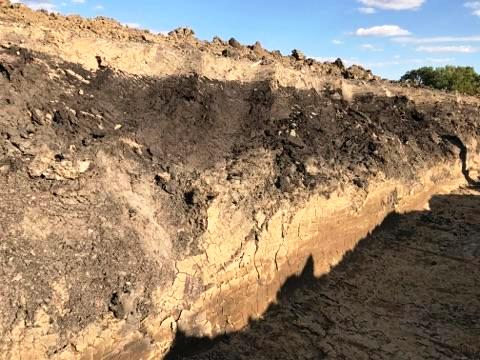
Generally speaking, permanent dike construction requires removal of permeable material to ensure integrity of the dike-levee to prevent failure.
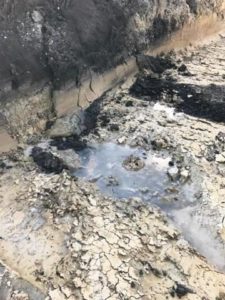
Image #3 – displays an unknown water source that is allegedly active.
If the water source is in fact active, additional inspection is needed to ensure the base of the dike-levee is not compromised by an alleged active water source.
Residents remarked that “bubbles were present” at the pool of water.
There are conflicting reports on whether the section of inspection trench picture was filled in – concealing the alleged active water source.
Unknowns, such as water sources lend credibility to inspection trenches being a vital part of construction activity.
Did you know that in 1974, during a routine excavation for a housing development in Hot Springs, SD – earth moving equipment exposed a Mammoth bone that lead to 61 Mammoths and other Pleistocene treasures.
Image #4 – Drain Pipe Left in Base of Dike-Levee – Oxbow, ND
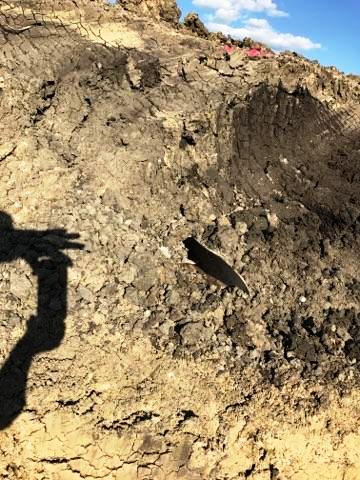
Image #5 – Power Cables and Drain Pipe in Base of Dike Levee – Oxbow, ND
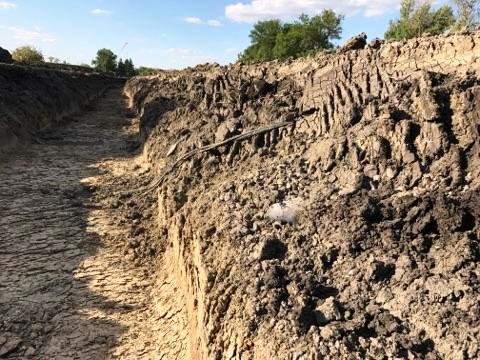
Image #6 – Buried Timber – Oxbow, ND

It appears that residents raising questions have legitimate concerns on construction activities intended to provide flood protection to their community.
Currently, Fargo, Cass and ND taxpayers are on the hook for $107-$126 million – with potential costs reaching $150 million.
Isn’t it ironic that the exclusive golf course came first and no costs were spared – but the alleged flood protection the entire project is based upon generally advances on the lowest bid which fosters an environment to cut corners.
| UPDATED: 8-30-2017 |
—–Original Message—–
From: Marcus Larson [ REDACTED ]
Sent: Saturday, August 26, 2017 8:42 PM
To: Benson, Jason [ REDACTED ]
Subject: Oxbow Pics
Jason,
Here is a link to the Oxbow pic we discussed on Friday.
fmdam.org/oxbow-nd-residents-concerned-over-failure-of-ring-dike
If the permeable material is going to be removed, please let me know and I will update the article accordingly.
Thank you for looking into this matter.
Marcus Larson
—–Reply Message—–
Subject: RE: Oxbow Pics
From: “Benson, Jason” [ REDACTED ]
Date: Tue, August 29, 2017 8:39 am
To: “Marcus Larson” [ REDACTED ]
Priority: Normal
Marcus,
I wasn’t able to send you this follow up email yesterday, but wanted to get it to you today.
The levee work in Oxbow is being done under strict safety and design guidelines, which are reviewed by the Corps of Engineers. The inspection trench found the presence of utilities, drain pipe, and other materials. These findings are common and have been seen on other levee work in the area. While they can be serious if not addressed, this is exactly the reason that an inspection trench is required ahead of time so the safety and integrity of the levee can be assured. The contractor will address these issues as part of their original scope of work and has already begun doing so.
Here are my responses to the different photos:
Image 1 & 2: The clay soils in our area consist of both yellowish and dark clays. While the dark clays at a quick glance can appear to be black dirt, these clays work great for levee construction and achieving compaction standards.
Image 3: The water source is hard define where it might be coming from. However, a small puddle of water could have seeped out of the drain pipe in image #4. Overall this should not be a concern as the water appears to be very isolated and not flowing, running down the trench, or filling the trench up.
Image 4 & 5: Drain pipes and underground utilities lines are exactly why we dig inspection trenches. While efforts are made to remove these items as houses and other facilities are being demo’d, some underground features may still be there. Since this has been identified, these items will be removed and there shouldn’t be any further issues.
Image 6: Some minor roots maybe encountered during levee construction. Overall, we have not seen significant amounts of organic material and Corps standards allow for up to a 3 inch diameter branch or root. To only have one or two roots found in a long inspection trench is a good sign.
Overall the inspection trench is doing its job in allowing us to identify and remove any problematic items and ensure excellent levee construction. Our clay soils are optimal for this type of levee work and other regions of the country could only hope to have this quality material for constructing levees.
Finally, these photos do provide on significant revelation, safety. The person taking these photos apparently walked through the construction site and down into the trench. This is a huge safety concern for both the contractor and the Diversion Authority. We ask that residents refrain from entering any active construction site without permission and proper personal protective equipment (PPE) such as safety vest and hard hat. If residents have questions, they should contact the Diversion Authority staff or the contractor before entering or walking through the construction site.
Thanks,
Jason Benson, P.E.
County Engineer
Cass County Highway Department
1201 Main Ave West
West Fargo, ND 58078
701-298-2372
Views: 1695
